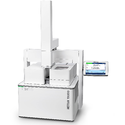Live Webinar: How to Determine Specific Heat Capacity by DSC
Discover Six Different DSC Methods for Determining this Important Material Property
Program Overview
- Definition of specific heat capacity
- Importance of specific heat capacity
- Presentation of the six DSC measurement methods in the STARe software
- Measurement tips and hints
- Interactive Q&A session
Specific heat capacity (cp) is the energy needed to increase the temperature of one unit of mass of material by exactly 1 °C. It is typically determined using differential scanning calorimetry (DSC) due to ease of use, short measurement times and accuracy.
Specific heat capacity is a characteristic, temperature-dependent, material property that is often specified in data sheets. It is a key property for improving technical processes such as injection molding, spray drying, and crystallization. It is critical in the safety analysis of chemical processes and design of chemical reactors.
Measurement Methods Discussed in the Webinar
Join our upcoming webinar where we present six different methods of calculating specific heat capacity. We first present the so-called Direct and Sapphire methods using a conventional DSC instrument and a linear temperature program. We then demonstrate four temperature-modulated DSC techniques: IsoStep DSC, Steady State ADSC, ADSC, and TOPEM.
Don’t miss this opportunity to gain in-depth knowledge about determining this critical material property. Register now and be sure to prepare your questions for our experts!
Heat Capacity vs Specific Heat Capacity
Heat capacity is the amount of energy needed to increase the temperature of an object by exactly 1 °C. Hence it is related to the size of the sample and does not characterize the material itself. The unit of heat capacity, Cp, is Joules per Kelvin (J/K).
Specific heat capacity is the energy needed to increase the temperature of one unit of mass of an object by exactly 1 °C. This is calculated by dividing the heat capacity by the sample mass, which provides a more useful characterization of the material. The unit of specific heat capacity, cp, is typically expressed as Joules per gram per Kelvin (J/g/K).
Expert

Angela Hammer
Dr. sc. nat. ETH
Dr. Angela Hammer received a Ph.D. in Analytical Chemistry (development of immobilized components for the use in ion-selective electrodes based on polyurethane membranes) from the Institute of Organic Chemistry at the Swiss Federal Institute of Technology in Zürich, Switzerland. She then joined Sika Technology AG in Zurich, Switzerland, as an analytical chemist. In 2007, she joined METTLER TOLEDO and has worked there since as an application specialist for Thermal Analysis. In her present position, she uses, teaches, and supports DSC, TGA, TMA, and DMA instruments for the METTLER TOLEDO’s Materials Characterization Group located at the head office in Switzerland.



